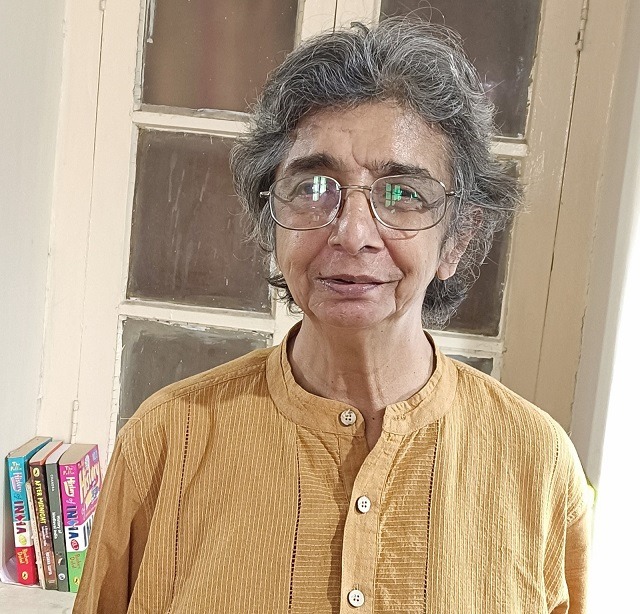
The Vijayanagara Empire was established in 1336 AD by two brothers Harihar and Bukka, sons of Sangama, feudatories of Kakatiyas of Warangal with the blessings of Guru Vidyaranya. They had served in the army of Sultan Muhammad-bin-Tughlaq. Vijayanagara is translated as ‘City of Victory’. The capital of Vijayanagara Empire was Hampi, the Deccan plateau-based region in South India.
The empire was established on the southern bank of the river Tungabhadra. There was conflict between Vijayanagara Empire and Bahamani kingdom. With the end of the Sultanate period the Deccan region came to power. They broke away from the Delhi Sultanate and established an independent state in Karnataka. The rising power of the Vijayanagara Empire brought a clash with many powerful emperors and the wars were fought with Bahmani Kingdoms over the Raichur doab (fertile region between Krishna and Tungabhadra), Tungabhadra doab (fertile areas of Krishna- Godavari delta) & Marathwada Foreign travelers visited the Vijayanagara empire left valuable accounts included – Ibn Batuta (Moroccan), Nicolo de Conti (Venetian), Abdur Razzak (Persian), and Domingo Paes (Portuguese).
The Vijayanagara period is divided into four different dynasties- Sangama, Saluva, Tuluva and Aravidu. The Sangama Dynasty (1336-1485) was one of the famous dynasties in South India. The Brothers Harihara and Bukka founded the independent Hampi kingdom and founded the dynasty and named it after their father Sangama. Saluva Narsimha (1485-1505) was the founder of Saluva dynasty. He silenced the rebellions of feudatories and kept the kingdom intact. Vasco da Gama landed in Calicut during his time in 1498. The Tuluva Dynasty was the third dynasty to rule the Vijayanagara Empire. Vira Narsimha founder of Tuluva dynasty (1505- 1570) was succeeded by his half brother, Krishnadeva Raya in 1509 AD.
During this time, the Vijayanagara Empire reached the heights of splendour with Krishna Deva Raya as its most celebrated king. From 1491 to 1570, they had five emperors. The Aravidu dynasty (1570-1650) was fourth and last dynasty of the Hindu empire of Vijayanagara in southern India. Its founder was Tirumala, whose brother Rama Raya had been the regent of the Sadasiva Raya of the Tuluvas. Administration The king was the head of all power in the Vijayanagara government. He was the final authority in civil, military as well as judicial affairs and often intervened to settle social disputes. He was head of the state and was regarded as the God’s representative on Earth. The king was assisted and guided by a council of ministers.
He was an enlightened and benevolent ruler. The Vijayanagara Empire was divided into 6 provinces. A “Naik” or Governor administered each province. The provinces were further divided into districts. The districts were divided into the smallest units, villages, called grama.. The kingdom was divided into different administrative units called Mandalams, Nadus, and Sthalas. Mandaleswara or Nayak was the governor of a Mandalam. The ministers were appointed from the three classes: Brahmans, the Kshatriya and the Vaishayas. The office of the minister was sometimes hereditary.
The three important key posts of the state were the Prime Minister, the Chief Treasurer and the Prefect of the Police. The Vijayanagara army consisted primarily of infantry, cavalry and war elephants, armed with bows and arrows, swords and lances as its principal weapons and cavalry (horse-riders) made them one of the most . Guns and cannons had been newly introduced. The Vijayanagara kings adopted guns and cannons in their forces. The combination of firearms powerful armies made them one of the most powerful armies in India. Raja Krishnadeva Raya reigned from 1509–1529.
He was the third ruler of the Tuluva Dynasty and is considered to be its greatest ruler. He possessed the largest empire in India after the decline of the Delhi Sultanate. Raja Krishnadeva Raya, the most important ruler of the Kingdom of Vijayanagara explains the position of Kingship in his book ‘Amuktamalyda” that a King should gather round him people skilled in state craft and seek their advice and help in administration. He further writes, “A crowned king should always rule with an eye towards Dharma” .
Battle of Talikota The battle of Talikota (23 January 1565) was a watershed battle held between the Vijayanagara Empire and an alliance of the Deccan sultanates. The immediate cause for the battle was that Ali Adil Shah of Bijapura demanded the return of Raichur from Aliya Ramaraya. Ramaraya refused and asked the Sultan to take it in the battle field. The successful army of the Bahami Sultans looted the city of Vijayanagara for many months. Religious endowments to centres like Sringeri, Tirupati, Shrishaila and Kalahasti stopped.
This was an obstacle to the development of the religion. The Portuguese were restricted to Goa without the support of Vijayanagara. It was a setback to their trade. The city of Vijayanagara was destroyed over a period of five months after the defeat of its army at the fateful Battle of Talikota on January 26, 1565. It lasted until 1646. Its power declined after the major military defeat in the Battle of Talikota in 1565 by the combined armies of the Deccan sultanates. This battle ended the prominence of Vijayanagara kingdom in South Indian politics.
The Kingdom of Mysore, Nayakas of Vellore and Nayakas of Keladi in Shimoga declared their independence from Vijayanagara. Vijayanagara became the greatest empire of southern India. By serving as a barrier against invasion by the Muslim sultanates of the north, it fostered the reconstruction of Hindu life and administration after the disorders and disunities of the 12th and 13th centuries.
Lakshmi Rameshwar Rao
(The writer has a Masters in Adult Education from Jamia Millia Islamia. She has many years of teaching experience at the school level as well as ten years of experience in the book publishing industry. Her work has been published in newspapers and a few syllabus books as well. Lakshmi has retired and now lives in Hyderabad.)





